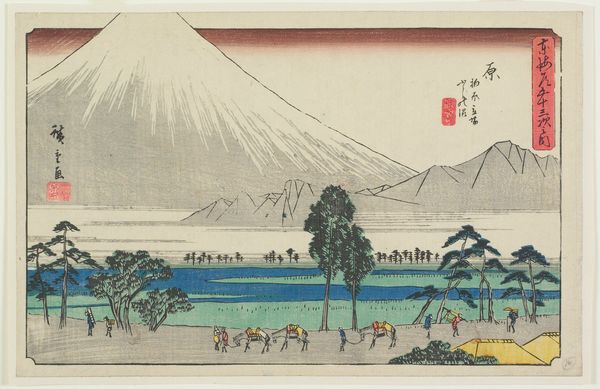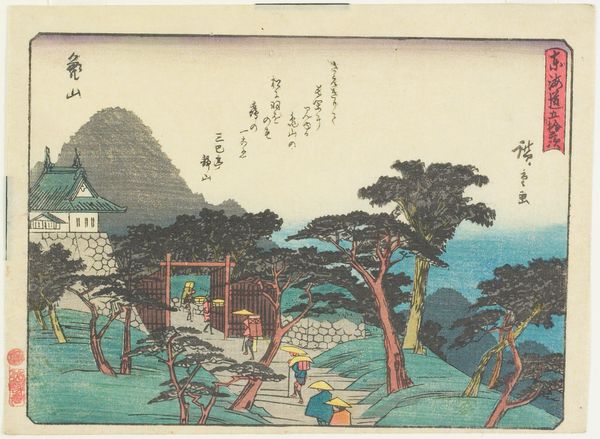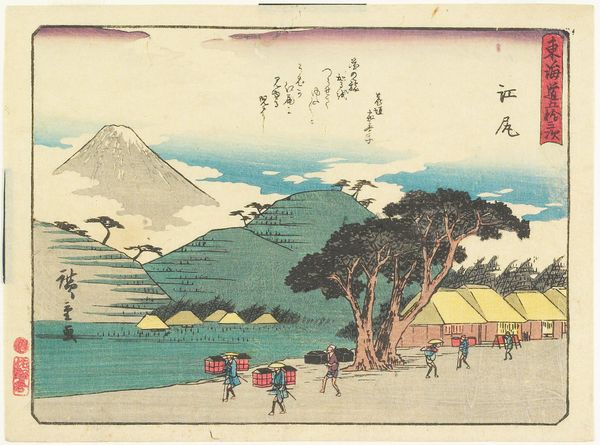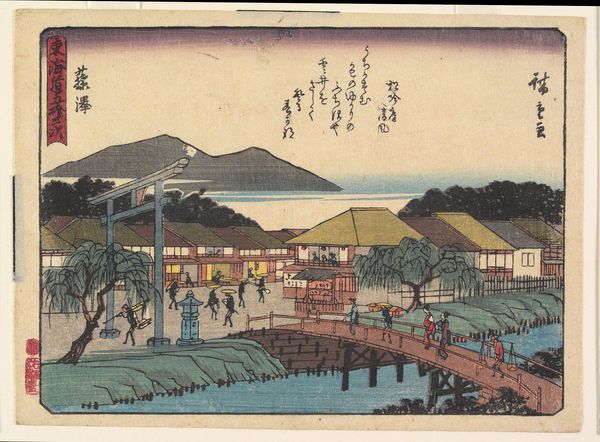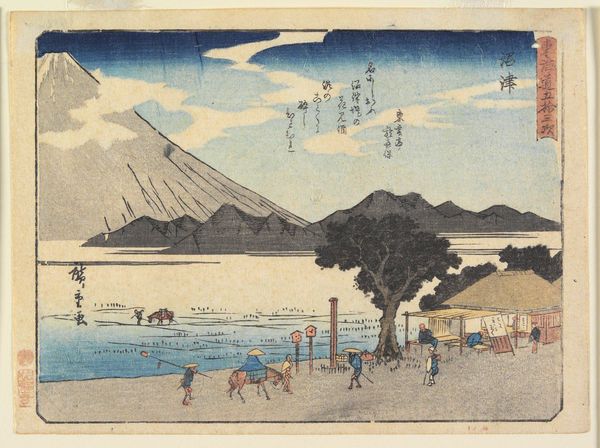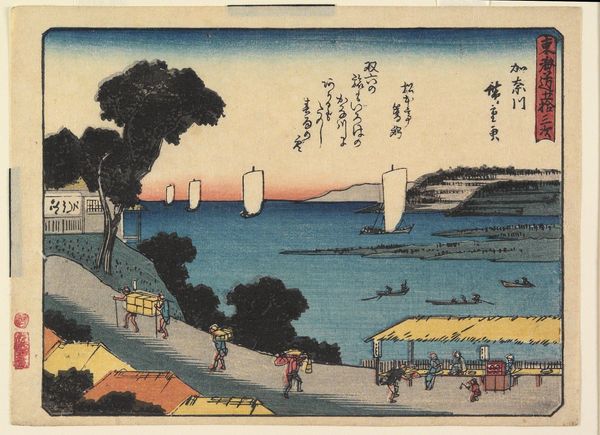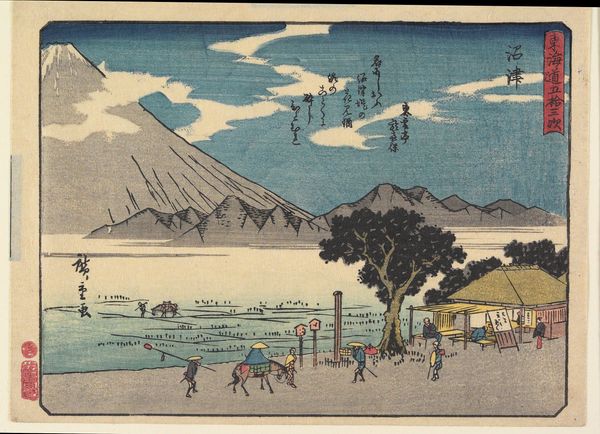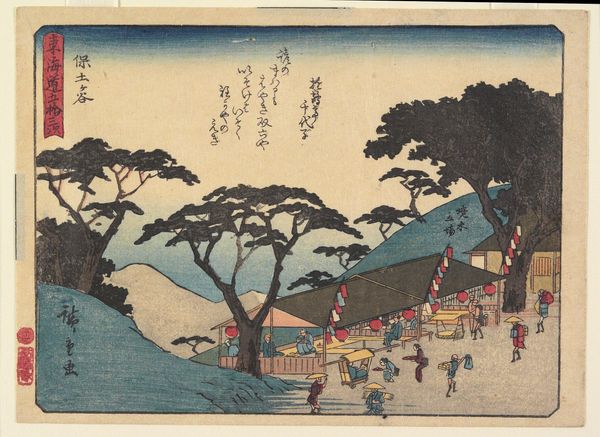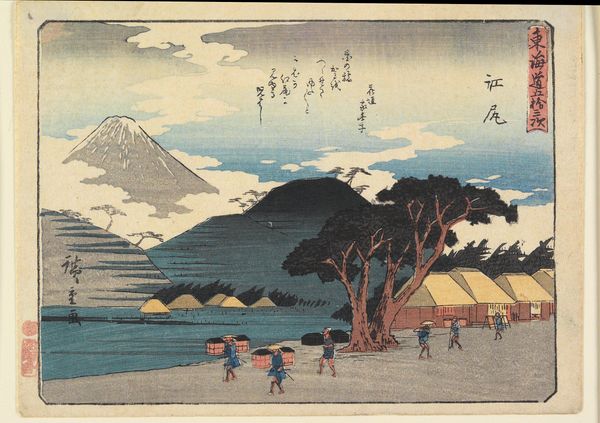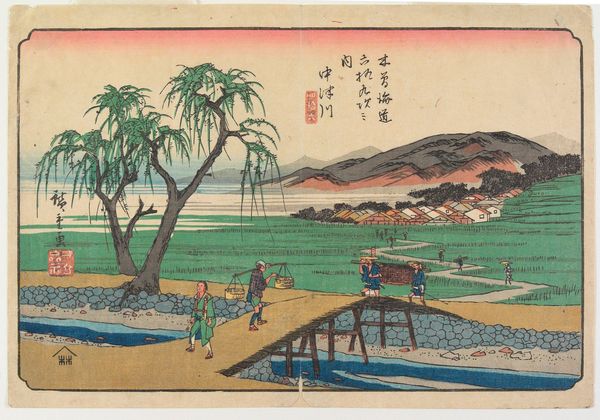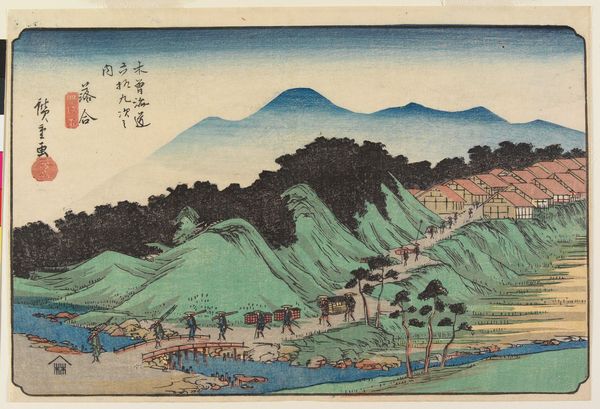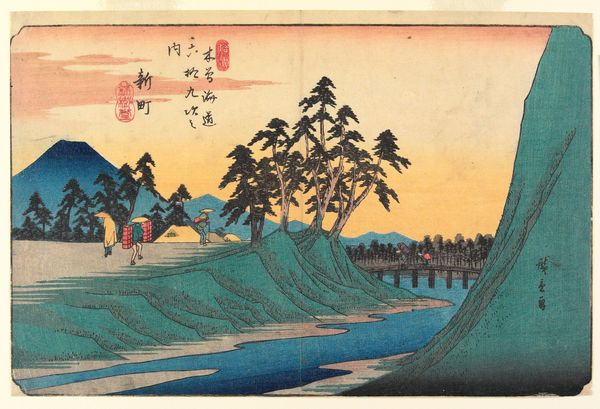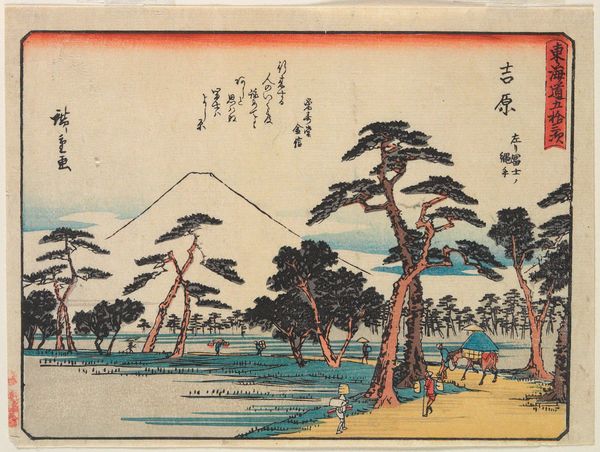
Numazu- The Ashigara Mountains and the Foot of Mt. Fuji c. 1850 - 1851
0:00
0:00
print, paper, ink, woodblock-print
#
water colours
# print
#
landscape
#
ukiyo-e
#
japan
#
paper
#
ink
#
woodblock-print
#
orientalism
Dimensions: 6 9/16 × 8 15/16 in. (16.7 × 22.7 cm) (image, horizontal chūban)
Copyright: Public Domain
Curator: Looking at this work by Utagawa Hiroshige, made around 1850, titled "Numazu - The Ashigara Mountains and the Foot of Mt. Fuji," you'll notice it's a woodblock print. Editor: Yes, and it's a rather captivating scene. There's a feeling of everyday life amidst something much grander—the looming presence of Mount Fuji itself. I'm drawn to the scale. The figures almost feel diminutive against that landscape. Curator: It is from Hiroshige's "Fifty-three Stations of the Tokaido" series, a visual record of the journey along the Tokaido Road, which connected Edo, now Tokyo, with Kyoto. What's significant is how this popular series contributed to a burgeoning culture of travel and tourism. These prints democratized landscapes, making views of famous places accessible to a wide audience. Editor: Absolutely, the visual vocabulary here is rich. Beyond Fuji, consider the significance of those gnarled pine trees framing the scene. The pine is often associated with longevity and steadfastness in Japanese symbolism, but also remembrance, providing an anchor in what would have been very unsteady times, a constant landmark. And of course, the laborers and travelers suggest not only daily routines, but also constant passage, with a quiet visual harmony emerging from such apparent tensions. Curator: Precisely. Hiroshige was deeply influenced by both traditional Japanese art and Western techniques, integrating perspective and atmospheric effects, all contributing to this series' broad appeal. Editor: This "floating world," as it was known, becomes quite interesting when you consider that this constant, repetitive depiction of passage turns movement itself into a symbol. The entire series then, which in fact contributed to such travels in the first place, is self-referential, feeding off itself and solidifying its iconic status. The very act of going somewhere *becomes* something worth representing in the artwork, so passage becomes iconized. Curator: A democratization, perhaps. We can see how prints like this one both mirrored and molded perceptions, shaping a collective identity rooted in the land and a shared experience. Editor: I see this print speaking about memory. The cool tones bring about reflection. I imagine that these travelers must look toward the quiet mass of Mt. Fuji in contemplative consideration of home. Curator: Indeed, these prints speak volumes about how landscapes not only reflect a sense of place, but actively shape its cultural meaning and experience. Editor: It becomes clear that Hiroshige, with his printmaking, helped make memory visual, ensuring both remain connected for a very long time.
Comments
No comments
Be the first to comment and join the conversation on the ultimate creative platform.
